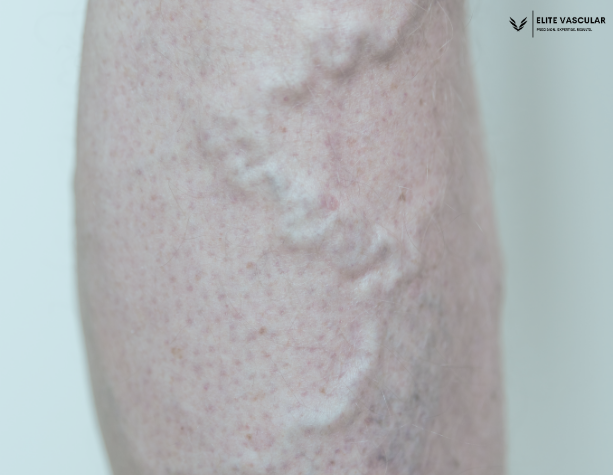- admin
- 0 Comments
Introduction
Patients with varicose veins may experience discomfort, cramps, inflammation and hard lumps (phlebitis). Although excessive growth is worrying, don’t worry. Despite its inconvenience, the lump in the leg isn’t serious. Phlebitis is likely when the surface vein of the foot becomes the clot.
Usually, the phlebitis that occurs in the legs is not considered to be a serious condition. Usually, the blood clot gets cured and inflammation decreases in a few weeks. Most of the individuals with surface thrombophlebitis are usually in good health. There is lack of any unpleasant secretions or boil, such as often seen in the foot ulcers. If you feeling hard lumps on varicose veins, meet the doctor. Although possibly minor, becoming a blood clot is the worst condition. Varicose veins clots can reach the heart or lungs and they should be treated carefully. Prompt detection can fix you changes before becoming a threat to life.
There are many vascular medical approaches available, each of which corresponds to the specific nature of hard lump. Some examples of these processes include vein stripping, radio wave therapy, sclerotherapy and laser treatment. These processes usually require small surgeries and they fix quickly. To prevent the transfer of clot, DVT may require further treatment.
Hard Lump on the Varicose Vein
Anyone with varicose veins is virtually familiar with the most common symptoms: vein discomfort and bulging veins on the legs and feet. Weight benefit and leg cramps also are common. Hard lumps are vein inflammations in damaged or spider vein leg superficial veins. Unlike a venous leg ulcer, phlebitis is outstanding by means of enlarged lymph nodes on the bothered vein, which may additionally result in leg discomfort. It’s frequently fallacious for a skin disorder. A clot that develops inside the arm and leg veins is called superficial thrombophlebitis or phlebitis. Phlebitis is described as a difficult lump surrounded by way of touchy, crimson, and swollen skin.
Although superficial phlebitis is rarely fatal, it is advisable to evaluate it from a vein specialist to exclude the possibility of more severe varicose veins. The primary challenge associated with phlebitis is its predisposition to its repetition, as well as a significant possibility of developing deep vine anthropology (DVT). If the blood clot moves from the surface vein to the deep vein, the condition known as phlebitis may develop in surface thrombophlebitis. If it is behind the knee, upper thigh or the waist then the chances of surface clot develops.
DVT is dangerous and quick medical intervention is required to prevent clots from spreading to the lungs. Pulmonary embolism and untreated varicose veins can know. Pulmonary end: symptoms of surgery include chest restlessness, dissolving and bloody cough. The localized surface vein burning generates a painful, solid bounce with redness on the leg. The correct diagnosis is important. Important distortions such as venous or varicose eczema which may be bad should not be ignored in these settings.
Common causes of Hard Lump
The term hard lump refers to the inflammation of a vein. Inflamed veins result from blood clotting or vein wall damage. A blood clot may develop a varicose vein on the skin. This is superficial thrombophlebitis. Below mentioned causes:
- A hereditary disorder that increases blood clots
- Chemotherapy/obesity
- Blood flow reduced by surgery, injury, or inactivity
- Reduction in blood flow(inactivity long time)
- Travelling long (sitting in a car, train, bus, truck, or airline)
- After surgery or trauma
- Pregnancy/ CVI/ Age Factor
- CVC or pacemaker implant
When to see the doctor (Medical Help)
Red, swollen, or twisted veins should be checked by a clinician quickly, particularly if there are risk factors for superficial venous thrombosis.
- The pain and discomfort experienced in the enlarged vein or varicocele can be extremely intense.
- If you are experiencing symptoms such as difficulty breathing, chest pain, or coughing up blood, it is important to seek medical attention promptly.
Request transportation to the doctor or emergency room. Driving may be challenging, therefore a business to help remember facts are helpful. The doctor may recommend surgical varicose vein therapy for superficial thrombophlebitis. As the situation resolves, these issues may cause superficial thrombophlebitis.
Surgical or endovenous treatment reduces varicose vein risk and avoids recurrence. Vein specialists undertake these procedures in hospitals and outpatient clinics. Surgical procedures includes, vein ablation, sclerotherapy and RFA.
Why phlebitis (hard lumps) should not be ignored
These issues are uncommon. However, DVT increases thrombophlebitis risk.
- Pregnancy
- Over 60 years old/ obese
- Frequently smokes/cancer
- Previously had superficial thrombophlebitis
- Inherited blood vessel clotting and malformed veins
Ask a doctor how to prevent risk factors. These should not be overlooked, particularly for long flights, road trips, and elective surgery that require an extended bed rest.
EliteVs specialize in vein health
If you suffering from any vein issue, ask the experts. At our vein clinic in Clifton, NJ, we providing advance vein solutions under the guidance of our top board certified vein specialist Nirman Tulsyan. Book an appointment or call us at 973-975-4447.
